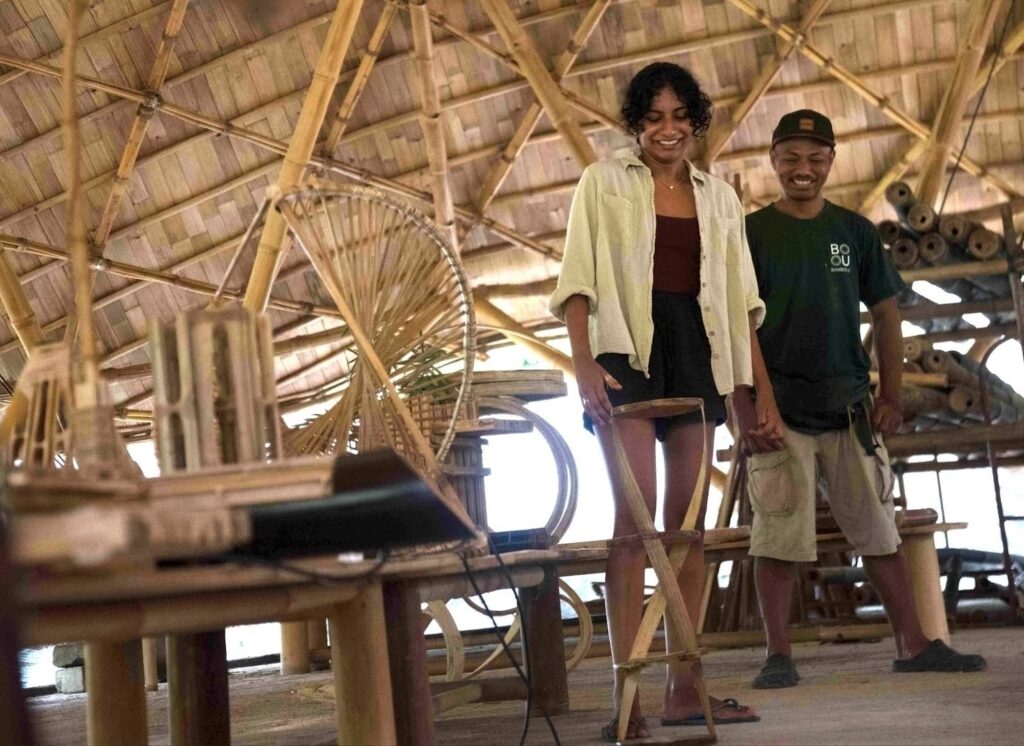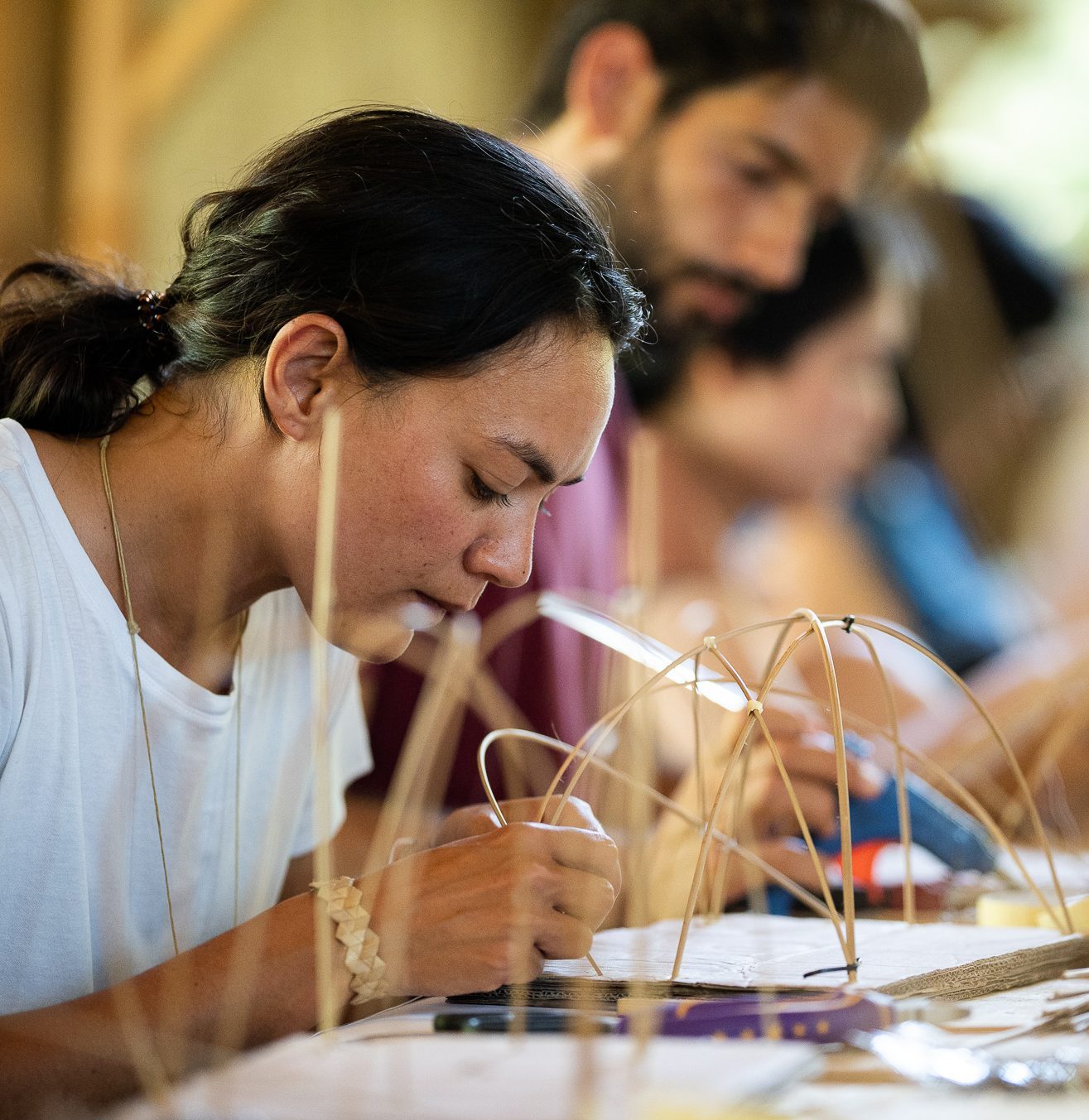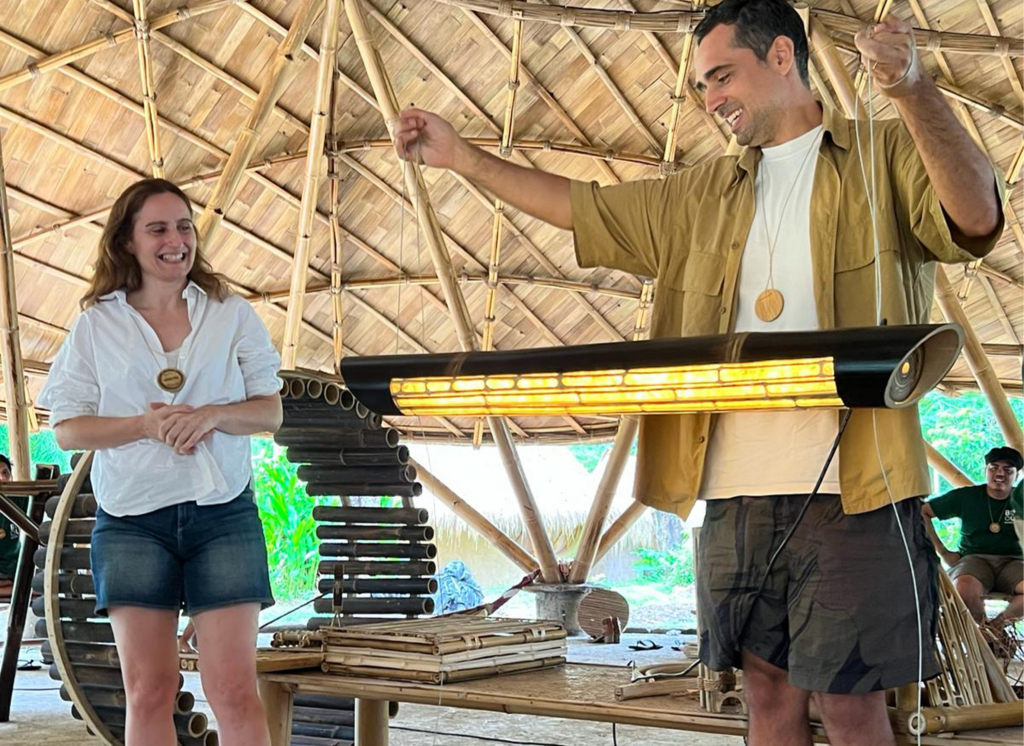From Design to Construction: Crafting Unique Bamboo Shelving

Karina from the United States enrolled in Bamboo U's 11-day course to experience bamboo craftsmanship. Intrigued by every aspect of bamboo, she took on the challenge of designing and crafting Bamboo DNA Shaped Shelves during the course's carpentry session.
Come along as Karina walks you through the whole process of making these shelves in the Bamboo U Build and Design course.
How did the ideal for your DNA shelving come about?
These projects actually came to me inspired by my background in Biomedical Engineering. I thought it would be cool to bring a bit of that scientific flair into this carpenting project. That's why I've decided to design to create shelves that mimic a simple structure I found in biology, which is the DNA helix.

I wanted to challenge myself to bring this idea to life. It might be a bit tricky, but I'm genuinely excited to see how bamboo' qualities affect how sturdy the shelves turn out to be. And on top of that, it's a fantastic opportunity to show off the beauty of bamboo and spotlight the distinct structure I have in mind.
Building the Shelves: Step by Step
I began my project by sketching a bamboo shelf design, drawing inspiration from my biology background to explore biomimicry through a DNA helix-shaped structure. This idea came to life during a carpentry session where I could execute my own concept. Initially unfamiliar with carpentry, I sought guidance from experienced woodworkers like Moko to refine and approve my design. Once confident, I immersed myself in learning the woodworking basics needed for construction.
“The construction started with cutting approximately 80 bamboo pieces into 20 cm lengths. I then glued groups of six pieces together, adding sawdust to the mix for enhanced strength. After sanding these down to a smooth finish, I arranged four planks in a cross formation and secured them with epoxy.”


After the epoxy set, I used a scroll saw to cut a 20 cm diameter circle in each glued stack, filling any discrepancies with a sawdust-epoxy mixture and sanding them again for smoothness. To achieve the helical structure, I applied a rolling technique on split bamboo to create a durable twist. With Moko's assistance, we assembled the shelf, ensuring each component was securely nailed together.
This project not only honed my carpentry skills but also allowed me to incorporate sustainable practices and innovative design inspired by natural elements.
What are some challenges you experience?
My main challenge with this project was figuring out how to create this complex shape with my limited carpentry skills and knowledge of bamboo. I quickly learned as much as I could to understand the materials and how to use the tools provided by the team. I had always been interested in carpentry and the idea of being able to create my own furniture pieces. I was lucky to learn from such skilled and persistent carpenters who helped fix my mistakes and bring my idea to life.
I picked up some handy tricks along the way, like using sawdust epoxy for a smooth finish. In the end, for me, it was a balance between making sure the shelves were sturdy and showing off the natural beauty of the bamboo.

Also, doing this project on my own made me admire the craftsmanship of carpenters even more, seeing how they create unique pieces. This hands-on experience also sparked my appreciation for bamboo structures and the artistic craftsmanship it takes.
Experiencing it firsthand has sparked my curiosity to learn more about bamboo. I'm grateful to Bamboo U and the carpentry team for their generous help and willingness to share their knowledge and experiences whenever I asked.
How do you feel about this experience?
Even though I didn't know much about bamboo or carpentry before this course, I was excited to learn from the experts in the field. Bamboo has so many possibilities as a material, and I wanted to explore all of them.
Seeing how eco-friendly, flexible, and strong bamboo is, I hope to use it in my own projects, even if they're in a different field. Throughout the course, I learned not only how to create things from bamboo but also how to maximize its use and potential.
I highly recommend this course and definitely share my experience with everyone that I know. It has changed the way I view the world and how I want to approach my studies in university.
The 11-day build and design course was incredibly fun and provided an amazing opportunity for me to learn about this new material. Thank you, Orin and the entire Bamboo U team for their dedication to teaching me and the others.
Join the next 11-day Build and Design Course, and let’s begin your bamboo journey! To know more and book the course: bamboou.com/11-day-course/

Meet Karina Arakal, a Biomedical Engineering Student from the United States, eager to dive into the world of bamboo. Karina is currently on a gap year from University, and she is hoping to explore different fields by immersing herself in these types of learning experiences. She's excited to learn all about the bamboo process from start to finish, as well as an insight to the sustainable architecture world. Joining this course, she hopes to explore the natural geometric properties of bamboo and perhaps create a unique piece of furniture for herself in the process.
August 16-27, 2024
The 11 Day Bamboo Build & Design Course in Bali
In 11 days, we'll show you how to build bamboo structures we’ll share all that it takes to build with nature.
Open Enrollment for September 13th
The Fundamentals of Building with Bamboo Online Course
All the fundamentals you need to get you started working with bamboo. Deep dive into cinematic videos and step-by-step guides that will provide you with a strong understanding of bamboo as a design and building material.
















